Bowline
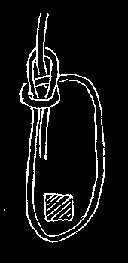 |
Use the Bowline for tying to objects, animals or people when reliability is important. The bowline is a good knot to fasten a painter to a boat or to tie to a person in a rescue situation. It's the only safe knot to use if you are tying a rope around the neck of a horse (or other type of stock animal). Note that a bowline can slip slightly and it should always be finished off with two half hitches when it is tied to a person. |
Driver's Hitch
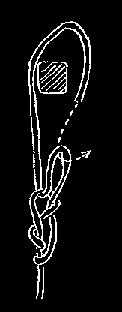 |
Use the Driver's Hitch (also called Diver's Hitch or Non-slip Trucker's Hitch) for tying on loads when a very tight rope is needed, i.e. securing canoes and boats to the top of a car, securing a heavy item to a dolly, securing a high load to the back of a pickup truck. This knot can handle a broader range of applications than the "True" Trucker's Hitch (also called Truckie's or Hay Hitch) which without tension will come loose. It is, by far, a better knot than the "False" Truckers Hitch which can be very difficult to untie after a load has been placed on the "pulley loop." |
Figure-8 Follow Through
 |
Use the Figure Eight Follow Through for tying two ropes together. The advantage of the Figure Eight is that it is easier to untie (particularly after a load has been placed on it) than other types of knots used to fasten two ropes. This knot can also be used for tying into a climbing harness or securing the rope to something; instead of using the follow through to tie two ropes together, you tie the rope back onto intself. |
Improved Cinch Knot
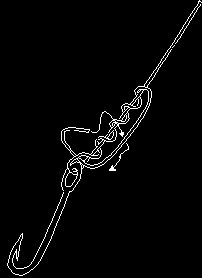 |
If you do any fishing, this is a very helpful knot. It's the knot to use for tying fishing line to hooks, lures, swivels or flies. Whenever a knot is tied on a line, it weakens the overall strength of the line. For instance, an overhand knot can reduce the strength of a line as much as 50%. The Improved Cinch, however, will reduce strength only about 5%. To tie the Cinch: place the line through the eye of the hook, make five turns around the standing part of the line, and finish it off as shown. Lefty Kreh and Mark Sosin in Practical Fishing Knots report that five turns is the optimal number: less than five weakens the knot and more than five makes it difficult to tighten. To enable the knot to snug up evenly and securely (which is necessary to achieve the knot's full strength potential), always lubricate it with water or saliva. If you are using thick fishing line, use three turns; five turns won't allow the knot to tighten properly on thick line. |
Rolling Hitch
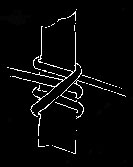 |
Use the Rolling Hitch when you are tying a rope to a pole and you want the knot to tighten and constrict around the pole. The Clove Hitch, a well known knot, may also be used around a pole, but the Rolling Hitch will provide better gripping power on smooth, rounded poles. The Rolling Hitch can be used for tying ropes to canoe thwarts, small trees, tent stakes, and tarps without grommets. It may also be used to close the top of a cloth or plastic garbage bag. |
Tautline Hitch
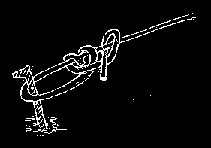 |
Use the Tautline Hitch when you need to be able to adjust the tension or length of a tied rope. It is very useful for tying tarps to trees or stakes. |
Two Half Hitches
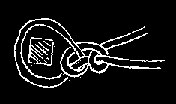 |
This is the all purpose outdoor knot. Use it to tie nylon cord to a tarp, to secure a load to a pack, to tie a load on a boat, to tie your dog to a tree, etc. It has been said that "two half hitches will hold the devil." |
